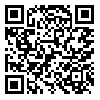







































BibTeX | RIS | EndNote | Medlars | ProCite | Reference Manager | RefWorks
Send citation to:
URL: http://psychologicalscience.ir/article-1-2205-en.html
Background: The significance of self-directed learning has become increasingly prominent within the current educational system in Iran. Various psychological aspects engage students who actively participate in learning through self-directed methods. While the existing literature has focused on self-directed learning, influential variables such as emotional creativity, critical thinking disposition, academic buoyancy, and achievement motivation have been largely overlooked.
Aims: The aim of this study is to design and test the causal model of selfdirected learning based on emotional creativity, critical thinking disposition and academic buoyancy with the mediation of Achievement motivation.
Methods: In terms of purpose the present study is applied and the descriptive method is correlational. The statistical population includes all the male students of the second secondary school in Izeh city. The sample size in this study is 400 students based on Cochran's formula, who were selected using a proportional multi-stage random sampling method.The data collection tools in this study include Fisher King and Tagos self-administered learning readiness scale questionnaire (2001(Critical Thinking disposition Questionnaire of Ricketts (2003), Martin and marshs Academic buoyancy Questionnaire (2006), Avrils emotional creativity questionnaire (1999) and the Herman’s AchievementMotivation Questionnaire, (1970).
Results: The results indicated a relationship between emotional creativity, self-directed learning and Achievement motivation.there is also relationship between critical thinking with self-directed learning and Achievement motivation. Academic buoyancy, self-directed learning and Achievement motivation.there is a relationship between Achievement motivation and self-directed learning. The results showed that the critical thinking disposition is related to self-directed learning through the Achievement motivation of and academic buoyancy through Achievement motivation to the self-directed learning.
Conclusion: Based on the results of this study, the variables of emotional creativity, critical thinking disposition, academic buoyancy, and achievement motivation have significant direct and indirect effects on self-directed learning. This model demonstrates its potential as a suitable framework for enhancing self-directed learning among students. Further studies with larger sample sizes can provide a more comprehensive perspective on these relationships and contribute to a deeper understanding of the factors influencing self-directed learning.
Received: 2023/10/17 | Accepted: 2023/12/19 | Published: 2024/06/1
| Rights and permissions | |
 |
This work is licensed under the Creative Commons Attribution-NonCommercial-NoDerivatives 4.0 International (CC BY-NC-ND 4.0) License. |
This work is licensed under the Creative Commons Attribution-NonCommercial-NoDerivatives 4.0 International (CC BY-NC-ND 4.0)





